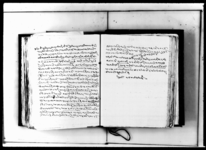A copy of an emancipation deed issued to Gajakesara (VS 1864)
ID: RRC_0019_0444
Edited and
translated by Manik Bajracharya
Created: 2019-01-28;
Last modified: 2019-07-22
For the metadata of the document, click here
The accompanying edition, translation/synopsis and/or commentary are available under the terms of the Creative Commons Attribution-ShareAlike 4.0 International License
Abstract
The deed of which this is a copy emancipates Gajakesara from slavery and assigns him to the Khatrī caste.Diplomatic edition
[1r]
५३९नं1आगेगजसींखत्रीकोछोरागजकेसरके2तलाईगुलामीपदवीदेखीपारगरीवक्स्यौ
3अवदेखीखतृभैइसखातिरज्मासीतजनैहाल
4आफ्नाजातसंगतमासामीलहोउइतीमीतीसदर
5चैत्रवदी३०रोज१
Translation
[1r]
No. 5391
To Gajakesara, the son of Gajasiṃ Khatrī. We have freed you from your slave (gulāmī) status. You are henchforth a Khatrī. Wear the sacred thread, mindful of proper conduct. Become associated with fellow members of your own caste. The date is valid.
Sunday2 , the 30th [solar day] of the dark fortnight of Caitra [in the year VS 1864 (1808 CE)]3 .
Commentary
This document, found in the Regmī Research Collection, volume 19, p. 371, is a copy of a lālamohara issued in 1808. The praśasti was left out of the copy, but from the date it is clear that the document was issued by King Gīrvāṇayuddha Vikrama Śāha. This royal order emancipates Gajakesara from slavery. It also grants him membership in the Khatrī caste, that of his father Gajasiṃ Khatrī. Etymologically, the caste name Khatrī is derived from Sanskrit kṣatri/kṣatriya. Another caste name, Chetrī, derived from the same Sanskrit term, belongs to the group of sacred thread-wearers and forms the largest caste group in Nepal. Khatrīs and Chetrīs are similar, but not the same. MA-1854 23.30 states that Khatrī is the caste assigned to an abandoned child of unknown caste if kept by a Brahmin. A child born of a slave woman with a Brahmin master also becomes a Khatrī (cf. Turner 1931 s.v. kamāro). Similarly, offspring of the union of an Upādhyāya Brahmin male and a Chetrī female or of a Chetrī male and a female of a lower but pure caste becomes a Khatrī (cf. Höfer 2004: 54-55).
This Gajakesara Khatrī was appointed as a captain with the Candana Nātha Palṭana in VS 1889 (Regmi Research Collection vol. 27, no. 160, p. 165). Gajakesara's father, Gajasiṃ, was a subba-ijārādāra of Morang until 1803 (RRS 19: 84); more information on him is provided in RRS 19: 84, 98 and 172.
An English translation of this document is available in M.C. Regmi 1987: 172.

